Croatian Kuna Coins and Notes to be Literally Concreted in History
December 30, 2022 - After all Croatian citizens deposit their Croatian kuna and lipa in the banks, there will be enough money in physical form to pave 50 kilometres of road or mark the way from the bottom to the top of Mount Everest. But, of course, the banks will not do that, and this huge physical mass of money will be used for isolation purposes. For reference, the estimate is that there will be 5,200 tonnes of coins, which is the weight of 124 Zagreb trams. There will also be more than 500 million banknotes.
As 24Sata writes, in order not to further pollute the environment by burning banknotes that contain colouring, they will not be burned but shredded into pieces smaller than a millimeter. They will then be used as insulation in public construction works. After 28 years, which is how long the Croatian kuna has served in Croatia, it will be concreted into the country's history, literally.
"When it's replaced with the euro, there will be the same amount of money in circulation as when the kuna was around. So, for example, the number of 100 Croatian kuna banknotes will be replaced by a proportional number of 10 and 20 euro banknotes", explains Tihomir Mavricek, the executive director of the cash sector of the CNB for Hina.
Fun fact, the Croatian kuna proved to be a fairly safe banknote that was not often counterfeited, as confirmed by the CNB. They explain that 200 kuna denominations were the most counterfeited, about a hundred per year. For example, in 2019, 506 banknotes were counterfeited, 157 in 2020, and 198 in 2021. For comparison, 4,280 euro banknotes were counterfeited in 2019, 237 in 2020, and 228 in 2021. Counterfeit money directly damages the person who receives such a note.
The withdrawal of kuna surpluses began in September. Around that period after each tourist season, surplus kuna is usually withdrawn into the vaults. The amount has increased this year. The kuna will be withdrawn gradually, banknotes can be changed indefinitely, and coins for three years. The CNB clarified that they know how much money they will print and mint each year. The cash cycle of money in the CNB starts from planning the needs for banknotes and coins for the following year. It depends on many factors, such as inflation, expected growth rates, etc.
Then the CNB orders money from printing shops and places where kuna and lipa are minted. From the CNB vault, it is shipped by trucks accompanied by special agents to eight cash centres in Croatia. Banks are supplied with cash from these centres, planning their needs daily depending on client announcements and the needs of the ATM network. Over the past 11 years, the amount of money in circulation has doubled and reached a level between HRK 41 and 42 billion. Mavricek says this was influenced by the increase in the standard and accumulated inflation. In recent months, businesses and citizens have had around HRK 30 billion in circulation. It will all become insulation.
For more, make sure to check out our dedicated Lifestyle section.
The Croatian Euro Coins You Can Buy As Of December 2022
November the 12th, 2022 - Croatian euro coins will be available for purchase as of the 1st of December, 2022, but won't be legal tender until the first day of 2023.
As Poslovni Dnevnik writes, the production of Croatian euro coins in preparation for the country's entry into the Eurozone started this summer, and by the end of the year, all the quantities planned for this year will finally have been minted. These quantities will be used, among other things, for packaging in so-called initial packages of Croatian euro coins for both individuals and businesses to purchase.
People will be able to get their hands on these initial packages of brand new Croatian euro coins from banks, FINA and post offices from December the 1st this year, with the Croatian National Bank (CNB) also publishing a picture of that initial package.
The initial packages of Croatian euro coins for citizens will be packed in small plastic bags containing 33 euro coins worth 13.28 euros in total. People will be able to purchase a maximum of two bags per transaction, and a total of 1.2 million pieces will be made available for these needs.
What about ATMs?
With the introduction of the euro as Croatia's official currency scheduled for January the 1st next year, ATMs will allow people to withdraw 10 or 20 euro banknotes, and requested amounts such as 50 and 100 euros will be paid out in those same 10 and 20 euro banknotes, the Croatian National Bank (HNB) revealed.
From January the 1st next year, dual circulation of both kuna and euros will remain in effect for two weeks, during which time change from payments made in either euros or kuna when buying groceries in stores will be returned to customers solely in euros.
In the period from December the 15th to the 31st, 2022, free kuna withdrawals will be introduced at all and any ATMs across the country. This will be maintained until January the 15th, 2023, in order not to have a negative impact on the availability of cash in kuna, they stated from the Croatian National Bank.
For more, make sure to check out our dedicated lifestyle section.
For Many Croatian Exchange Offices, This Summer Will be the Last
June the 25th, 2022 - For many Croatian exchange offices, this summer season will be their last. Croatia's Eurozone entry is set to take place at the very beginning of next year, and for a number of offices, the doors are being well and truly locked.
As Jadranka Dozan/Poslovni Dnevnik writes, the beginning of summer and the height of the tourist season is also the usual time of the "main harvest" for Croatian exchange offices, with the biggest turnovers in that niche market occuring during the months of July and August.
Last year, almost a third of the total annual turnover of authorised Croatian exchange offices was realised solely during those two summer months, and from the beginning of June to the end of September, 50 percent of the year-round turnover took place.
For many Croatian exchange offices, especially those for which these jobs aren't just a "side" activity, this summer, given the introduction of the euro at the beginning of next year, could be the last in which they remain in business.
According to the annual report of the Croatian National Bank (CNB) published this week, about 850 authorised Croatian exchange offices were active across the country at the end of last year, with a slightly higher number of them holding CNB licenses, a total of 1,146 of them.
Those who provided foreign currency trade services throughout the year or seasonally did so through approximately 3,500 Croatian exchange offices, where they traded a total of 31 currencies. However, out of 25.1 billion kuna in annual turnover (of which 18 billion kuna refers to purchases), more than 87 percent or 21.7 billion kuna was realised in euros (15 billion kuna through purchases, and the rest through the sale of euros). The majority of the remaining turnover refers to the US dollar (5.6%) and the Swiss franc (4.7% of the turnover).
Compared to pandemic-dominated 2020, last year's turnover within Croatian exchange offices increased primarily due to the recovery of the travel and tourism industry, by about 30 percent or almost six billion kuna. The first four months of this year also brought year-round traffic growth to offices.
According to the CNB, by the end of April, exchange offices across the country had generated a massive 6.73 billion kuna, compared to less than 5 billion kuna in the same period last year.
Authorised Croatian exchange offices achieved a record turnover back in 2017 (30.2 billion kuna), although in the meantime the inflows of tourist foreign currency grew. For example, in the record year of 2019, exchange offices made less than 30 billion kuna worth of foreign cash exchanges.
To a large extent, the explanation lies in the growing trend of non-cash payment transactions. By accepting foreign payment cards (cards issued outside of the borders of this country), transactions worth 20.8 billion kuna were realised last year.
Compared to the first year of the pandemic, 2020, it's equal to twice as much, compared to pre-pandemic 2019, not even four percent less, and compared to the exchange record in 2017, the value of transactions with foreign payment cards performed in Croatia last year was about 4.5 billion kuna higher.
There is no doubt that with the introduction of the euro in 2023, the number of CNB licenses for these jobs will fall even further. Most of the approximately (seasonally or year-round) 850 active Croatian exchange offices also perform other activities and currency exchange operations aren't their main activity.
The CNB estimates that they are the core business for approximately 200 legal entities, which in turn provide these services at approximately 400 exchange offices. It is also estimated that they employ between 600 and 800 employees.
For more, make sure to check out our dedicated business section.
10 Essential Mobile Apps for Traveling Around Croatia
May 9, 2022 - To make the most of your next vacation, here are some apps that shouldn't be missing from your phone when traveling around Croatia.
Oh yes, the good old days when having a city guide under your arm and an adventurous spirit were enough to travel the world and enjoy it to the fullest. Times have changed, and both the constantly evolving digital age and marketing make us aware of needs we didn't think we had. Today, we book airline tickets and accommodations, navigate with GPS, and change currencies, all on a mobile device.
But this is by no means a critique of the mobile app era. On the contrary, we will use this space to highlight some of the apps that will truly make your next trip easier, relieve the stress, and leave uncertainty while traveling around Croatia aside.
Just a reminder. The apps that we will list below are not necessarily secret or unknown, because some of them (we hope) you should already have installed! Basically, we remind you that the following apps are essential to make your experience in Croatia better.
Google Translate
Let's start off right: communication. Yes, English is spoken in Croatia. And very good English. Some will believe that it has to do only with the tourist context, but there are many reasons to explain the very good level of speaking and understanding of English in Croatia, even in public offices.
However, English is not the official language in Croatia. Croatian is. As a good tourist, you will find that the locals will really appreciate it if you replace some words in your sentences with Croatian ones. After all, it is a difficult language and they know it. You just have to try it and you will notice the gratitude almost immediately. Now, go ahead and use some common words or even dare to ask some questions in Croatian. Not only do we encourage you to do it to create a link with the locals, but also because it will be useful in case English is not enough to make it clear what you need with your host, your waiter at the restaurant, the bus driver, or even a random person in the street.
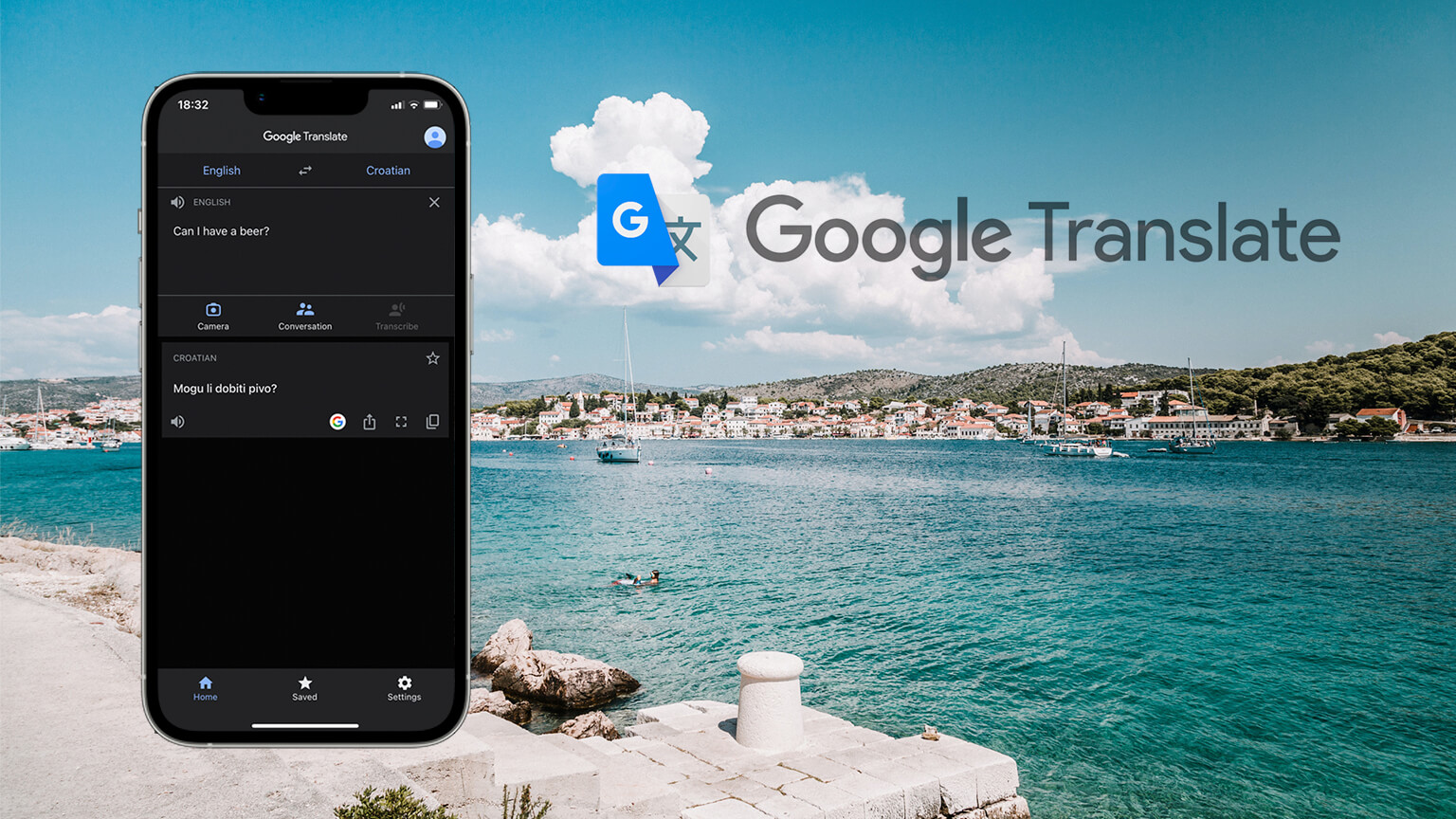
For this reason, Google Translate is the application that we recommend you to have. Personally, we recommend using their English to Croatian translator, which has more translations and fewer errors. There are other translation apps, but unfortunately, they do not have a Croatian translator or they are not well programmed for that function.
Available at Apple App Store and Google Play.
Currency
As you well know, the official currency in Croatia is the Kuna. Although it is very likely that you booked your accommodation and your tickets in euros, dollars, or pounds, once you land in Croatia you will need to know the currency exchange. It is true that you can use your credit or debit card to pay for everything here, but besides being a very good idea to be aware of the exchange rate, it is good to note that some places (such as bars, cafes, tours or activities) charge cash only.
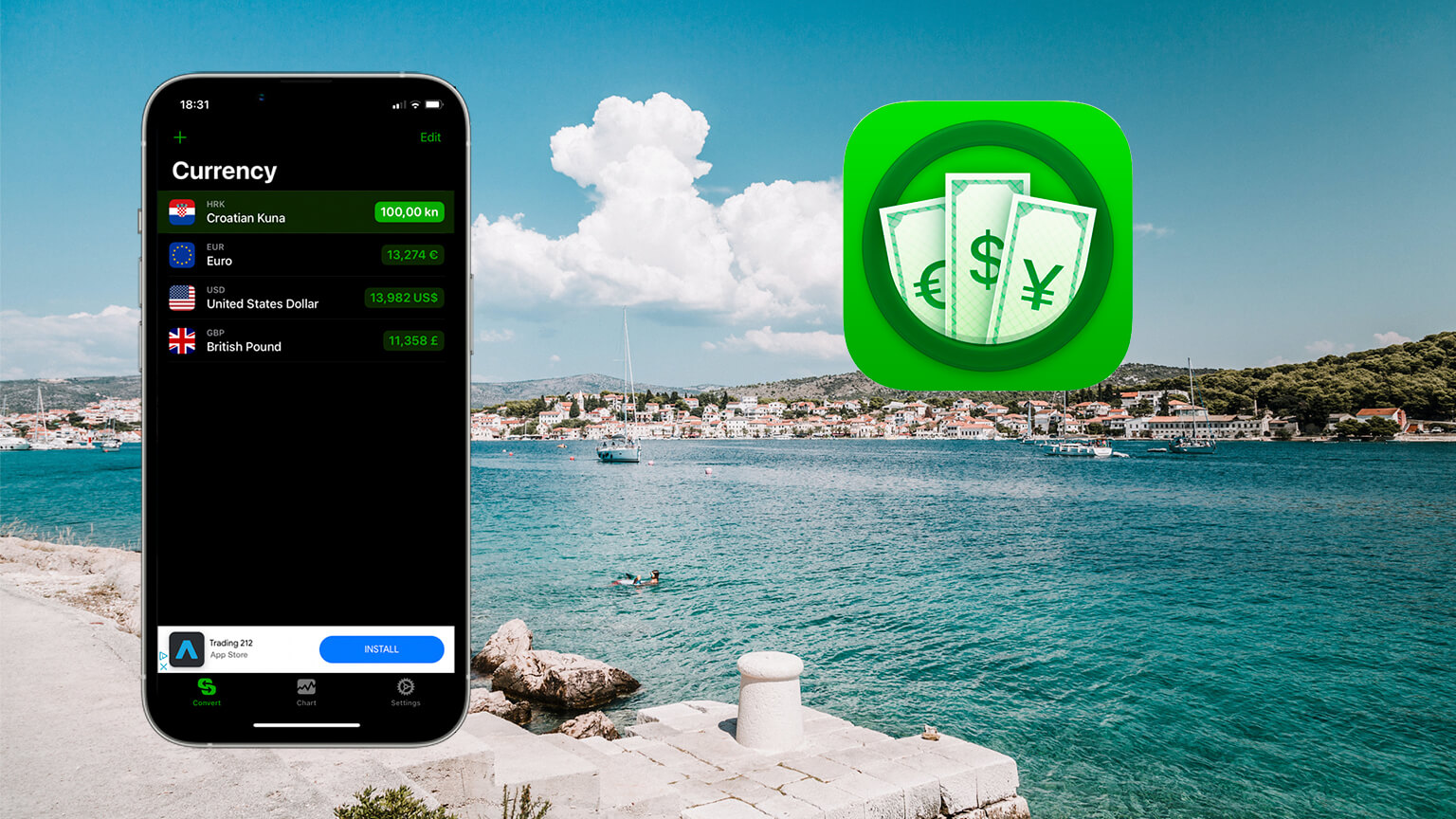
For this reason, before going to the nearest ATM to withdraw money or to an exchange house to change it, we recommend you use the Currency application, where you can see the value of the kuna versus absolutely all the existing currencies in the world. This will be a year of many changes in prices because from January 2023 Croatia will begin its transition process to the Eurozone. Therefore, we could not recommend you more to have this application at hand.
Available at Apple App Store and Google Play.
Google Maps
Another app that you should already have installed on your mobile device. Apple Maps is also an option, but from experience, I think Google Maps today is better designed to be used in a country like Croatia. Even the vast majority of satellite images from Google have been recently updated in the country, so it will be a great tool to guide you safely when traveling around Croatia.
In some cities, like Zagreb, the database of the public transport system is synchronized with this application, so it is possible to know exactly which bus or tram should take you to the place you need in real-time. In other cities, like Split, it is even possible to see the ferry routes in 360 views.
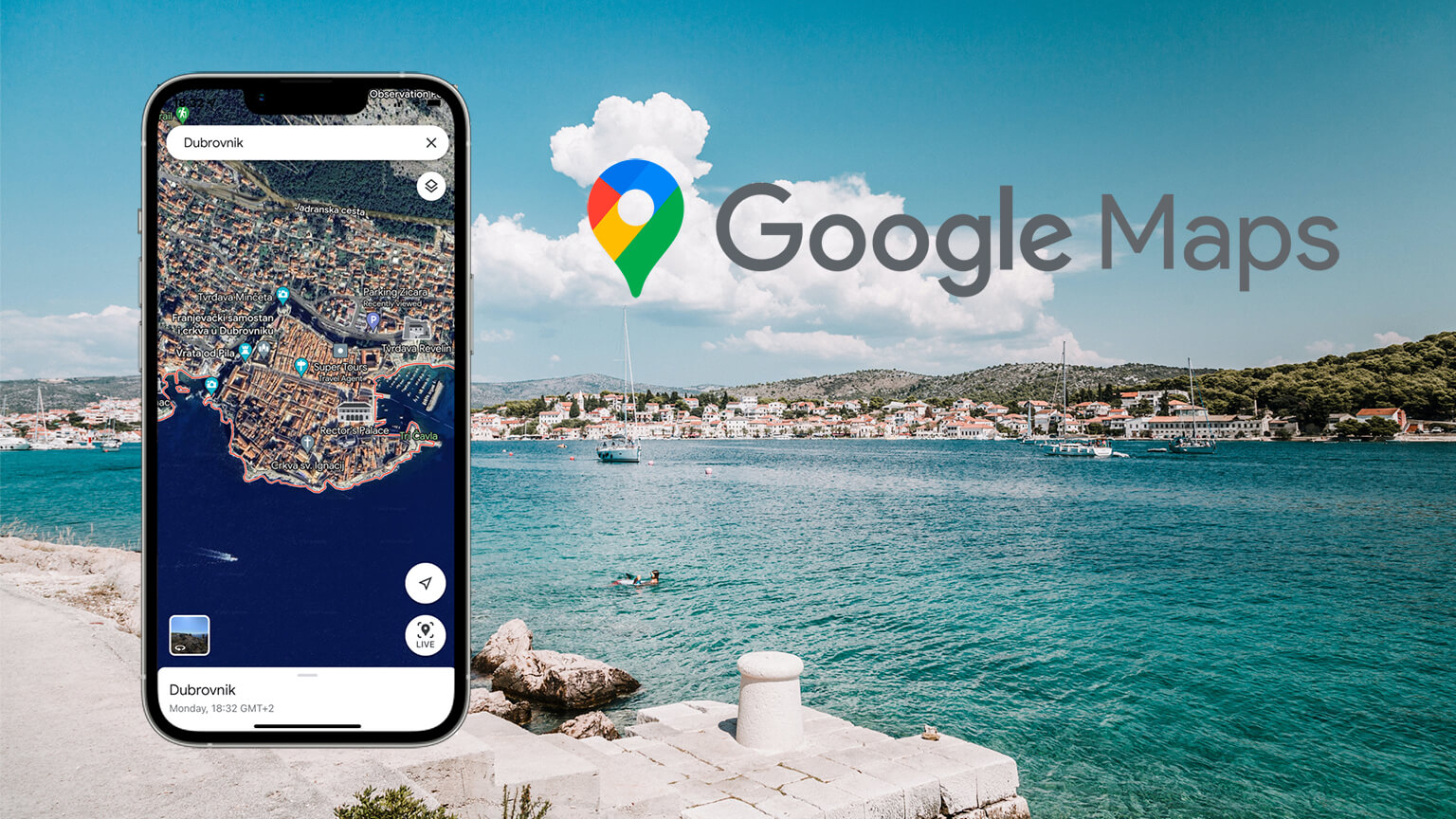
Google Maps will definitely be your ideal tool not only to find your accommodation, a good restaurant to eat at, or a secret beach to relax but also to build your itinerary if you plan to travel to several cities in Croatia, evaluate which is the best breakfast option based on its review system, or also to take alternative routes in case you come across a closed street or traffic.
Available at Apple App Store and Google Play.
Booking.com
No, we do not have a partnership with Booking.com, and we definitely know that there are numerous alternatives such as Hotels.com, Airbnb, Hostelworld, or Expedia. However, if there is one thing you need to know about accommodation in Croatia, it is that there is more than one type of accommodation. Actually, more than three. Honestly, more than ten. It's hard to count.
Hotels, villas, houses, apartments, rooms, bungalows, camping sites, eco-lodges, hostels... even boats! The offer of accommodation in Croatia is incredibly diverse, and this invites you to be open-minded and correctly evaluate which one will be able to effectively satisfy your dream vacation. Therefore, you need an accommodation search site that brings together all this diversity, and you can find it on Booking.com.
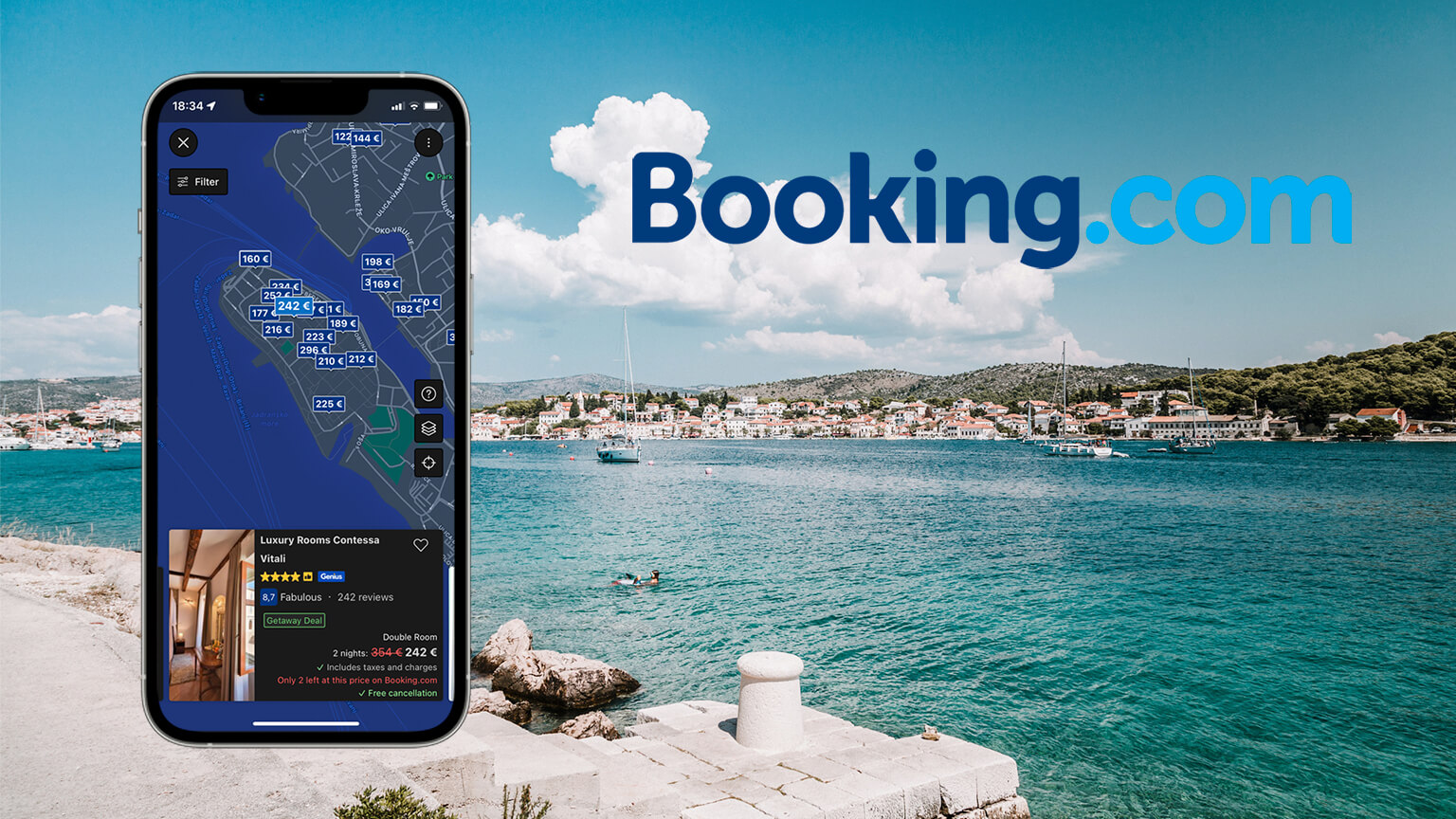
We do not want to recommend an app based on bad experiences, but the truth is that during the high season in Croatia there are many cases of scams to tourists looking for accommodation. Many of them book accommodations that cancel reservations or raise their prices at the last minute, or even didn't exist in the first place! Therefore, having an application like Booking.com is a good idea if you want to see alternatives with ratings and reviews that give you more security before booking your accommodation, as well as being in contact with a customer service that avoids this type of awkward situations.
Available at Apple App Store and Google Play.
FlixBus
During summer at its height, transportation alternatives for traveling around Croatia are not in short supply. Trains, planes, ferries, catamarans... you name it. However, the leading transport system in Croatia continues to be buses. Everyone, both locals and tourists, can basically get to any corner of the country, and from anywhere in Europe, by bus.
The German company FlixBus is the best option if you plan to reduce travel costs and choose the bus as your transportation alternative if you travel from another country to Croatia. Its modern fleet will bring you to and from Croatia with the comfort that a well-deserved vacation deserves.

Available at Apple App Store and Google Play.
Arriva Croatia
This time, we will add another bus application. Believe it or not, FlixBus is not necessarily the favorite in the country. Although you will see their green buses at all stations and roads in the country, it cannot be said that the margin of preference is as distant as that of Arriva Croatia, and for a special reason. FlixBus, while connecting to almost every city in Croatia, may not reach everywhere. Something that you will find in Arriva Croatia, which not only offers you tickets to big cities like Zagreb, Split, Rijeka, Osijek, Zadar, Dubrovnik, Pula or Šibenik, but also to more remote and smaller towns and villages throughout the country (and even the islands and National Parks!).
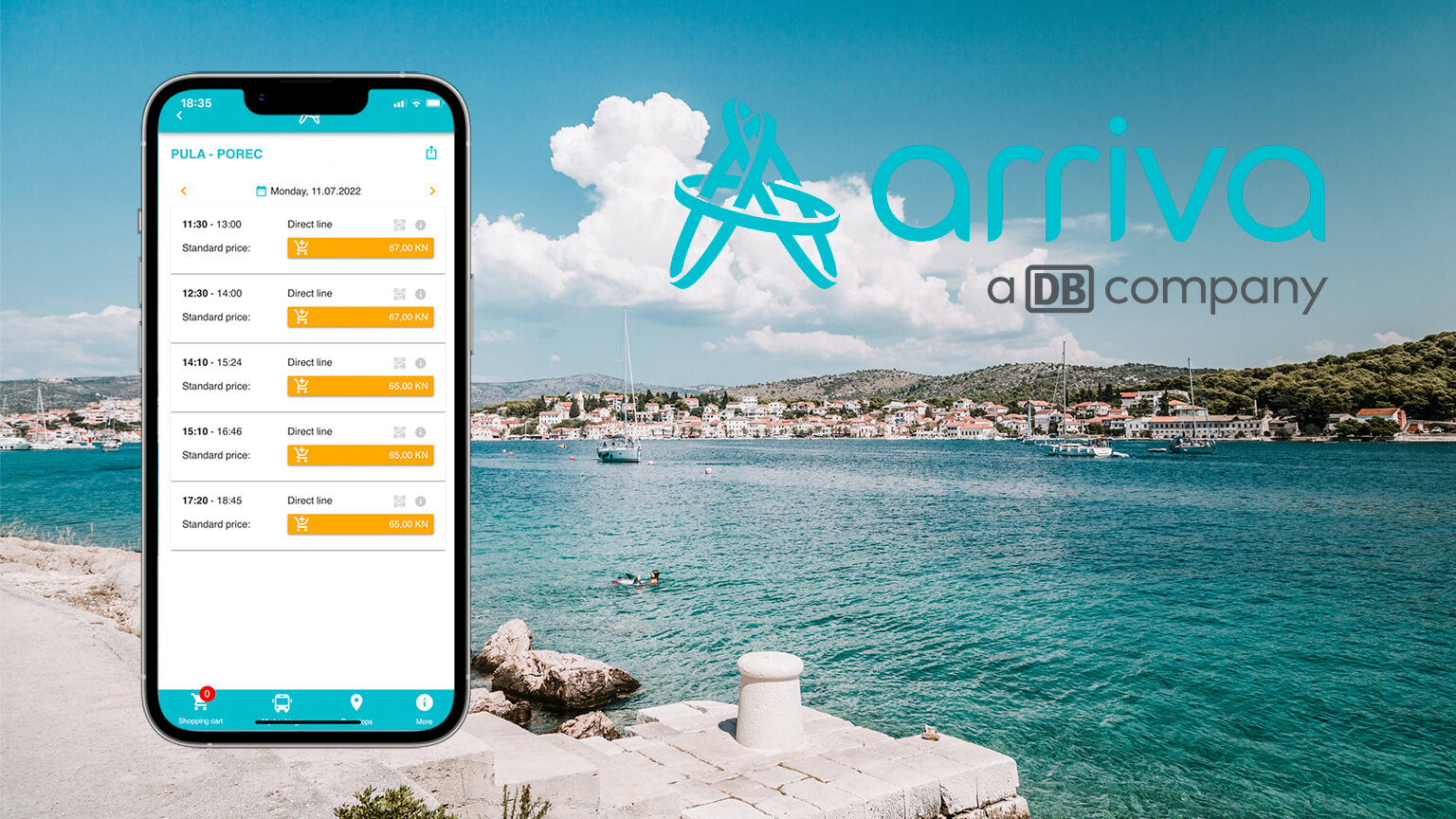
Likewise, Arriva Croatia has a huge fleet of buses and, therefore, a large number of schedules and competitive prices that will motivate you to compare your options between both companies. At the end of the day, it doesn't hurt to organize a trip around Croatia using buses from both Arriva Croatia and FlixBus. Both have mobile applications that allow you to check their schedules, reserve seats, and download your tickets to your phone.
Available at Apple App Store and Google Play.
BlaBlaCar
Here we present a somewhat different transport application. It is the app that almost everyone has recommended to me in Croatia, and very recently I used it for the first time to travel from Zagreb to Rijeka.
BlaBlaCar is a French application that allows you to choose a city or town of departure and destination, and it will give you a list of drivers who will also travel that route on the day you choose to travel. The drivers are the ones who offer their departure and arrival times, as well as the exact departure and arrival points in the respective cities. The choice is yours. You'll be able to see who else will be traveling with you, as well as ratings and reviews from past passengers.
BlaBlaCar is a great alternative if you travel light from one city to another, want to get there faster, and to make it more interesting, to meet people during the trip through good conversations.
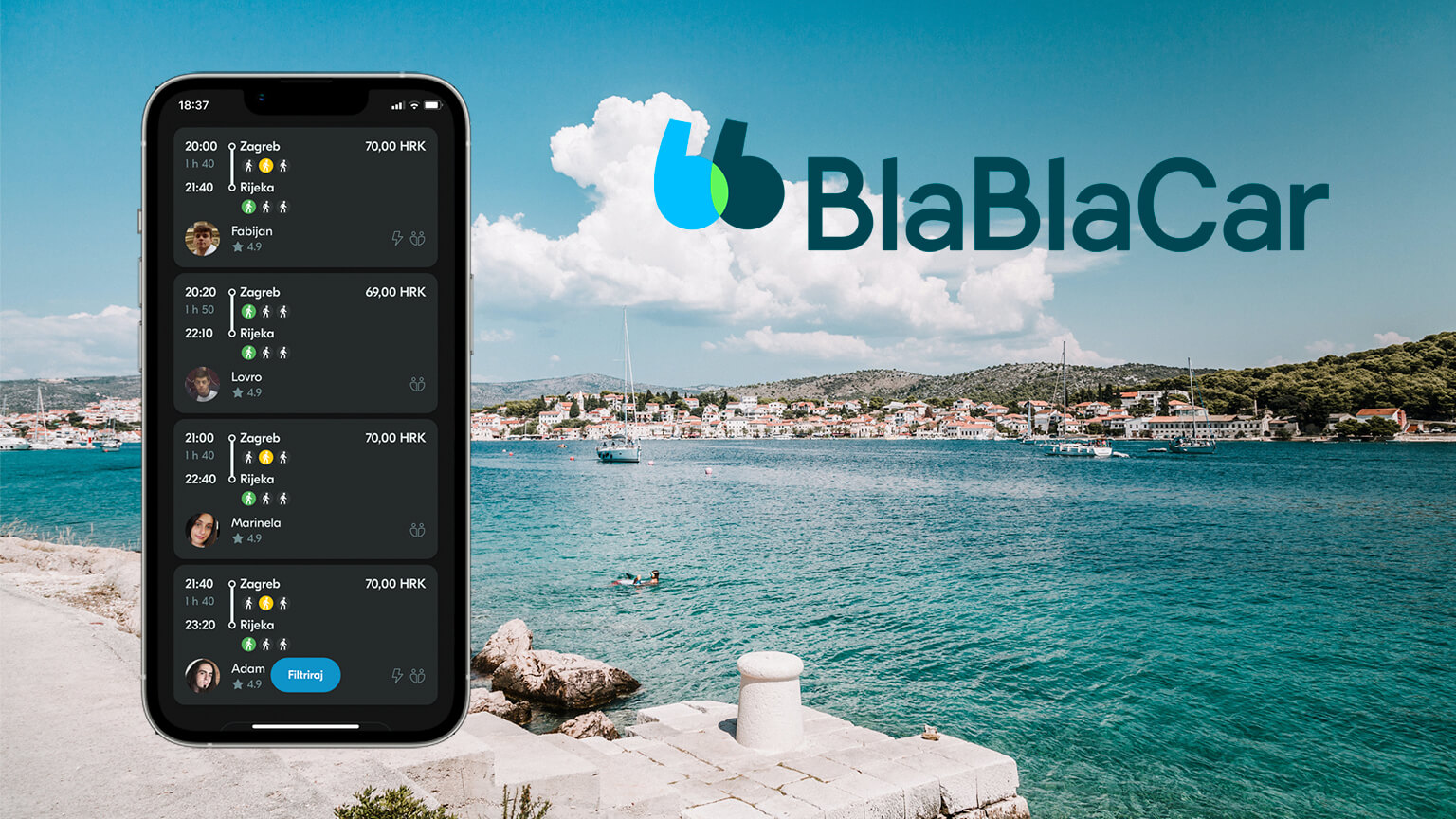
Once the driver has been chosen, you will receive a confirmation from him and you will be able to obtain his contact information to coordinate the meeting at the starting point. We recommend that you confirm your trip in advance, and also bring cash as it is generally the preferred form of payment for drivers.
Available at Apple App Store and Google Play.
Jadrolinija
What's a Croatia vacation without an island getaway? Of course, the Croatian Adriatic coast is long enough to find a beach that suits your needs, but there is a special feeling of getting on a ferry and exploring one of the more than 1000 Croatian islands. If that is your wish, then make sure you have the Jadrolinija app installed.
Jadrolinija is the national ferry company in Croatia, and while their website or port offices have long been the most common places to buy your tickets, their mobile app is also a great option as you never know when you may be tempted to change your plans and hop on a ferry.
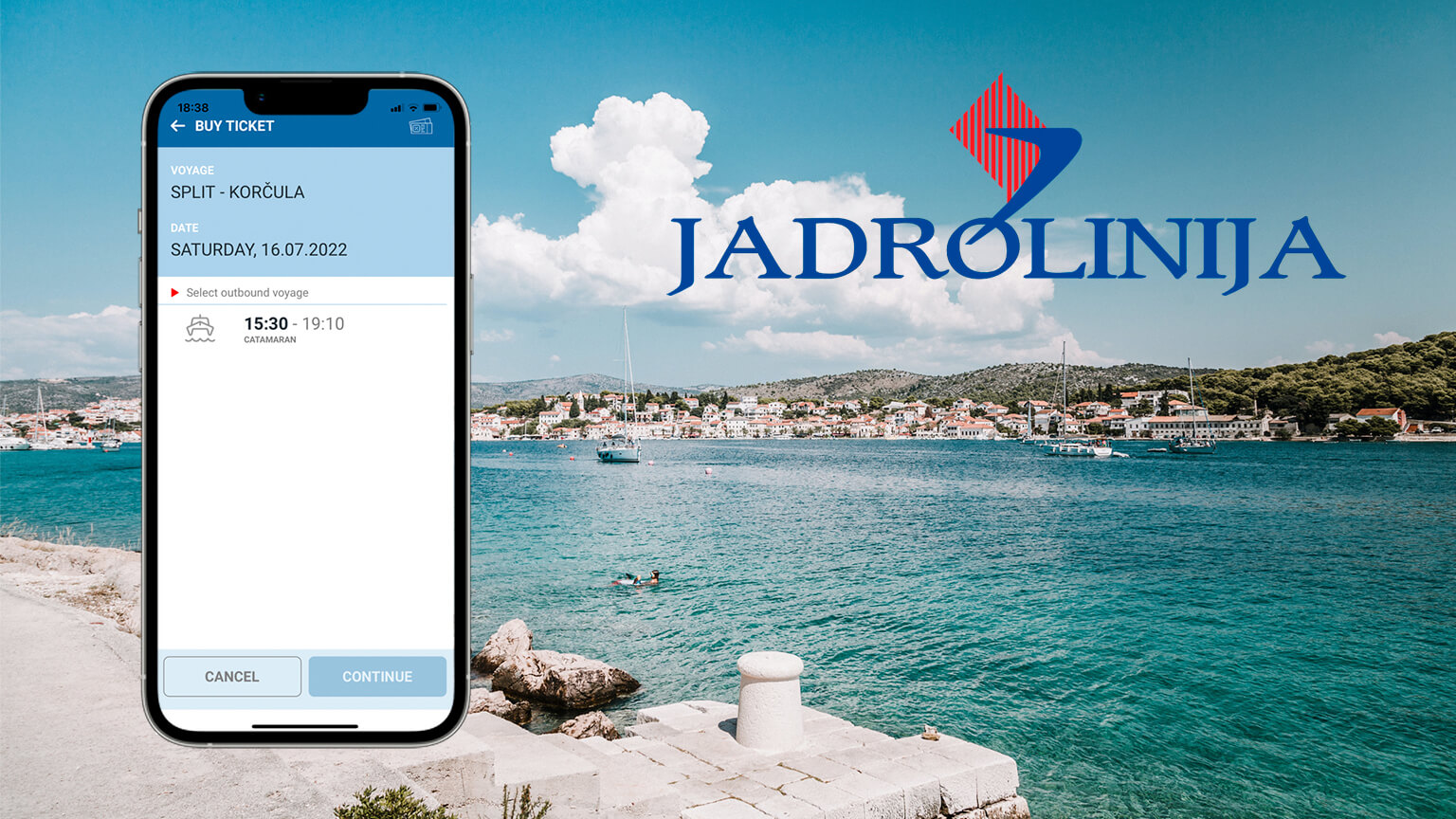
In their app, just choose your departure ferry port and you'll be able to see the destinations you can go to. This will allow you to see your table of times and prices according to the number of passengers. You can also find information about the location of the ferry ports in Croatia. The app allows you to pay by debit card.
Available at Apple App Store and Google Play.
Tripadvisor
Although Google Maps has a huge database of reviews and ratings to help you make a decision on where to go, stay or eat, Tripadvisor remains a benchmark among travel guide applications. Perhaps what positions Tripadvisor as a leader in the category is that you only have to enter a destination to which you plan to go to obtain a wide range of possibilities on what to do and see during your trip.
It is an application widely used by companies of all kinds in Croatia, and that is why you will not find it difficult to find tours, activities, or workshops that allow you to have a different vacation. Precisely, you will be able to use the ratings and reviews to validate the quality and reliability of these activities, and not take any risks.
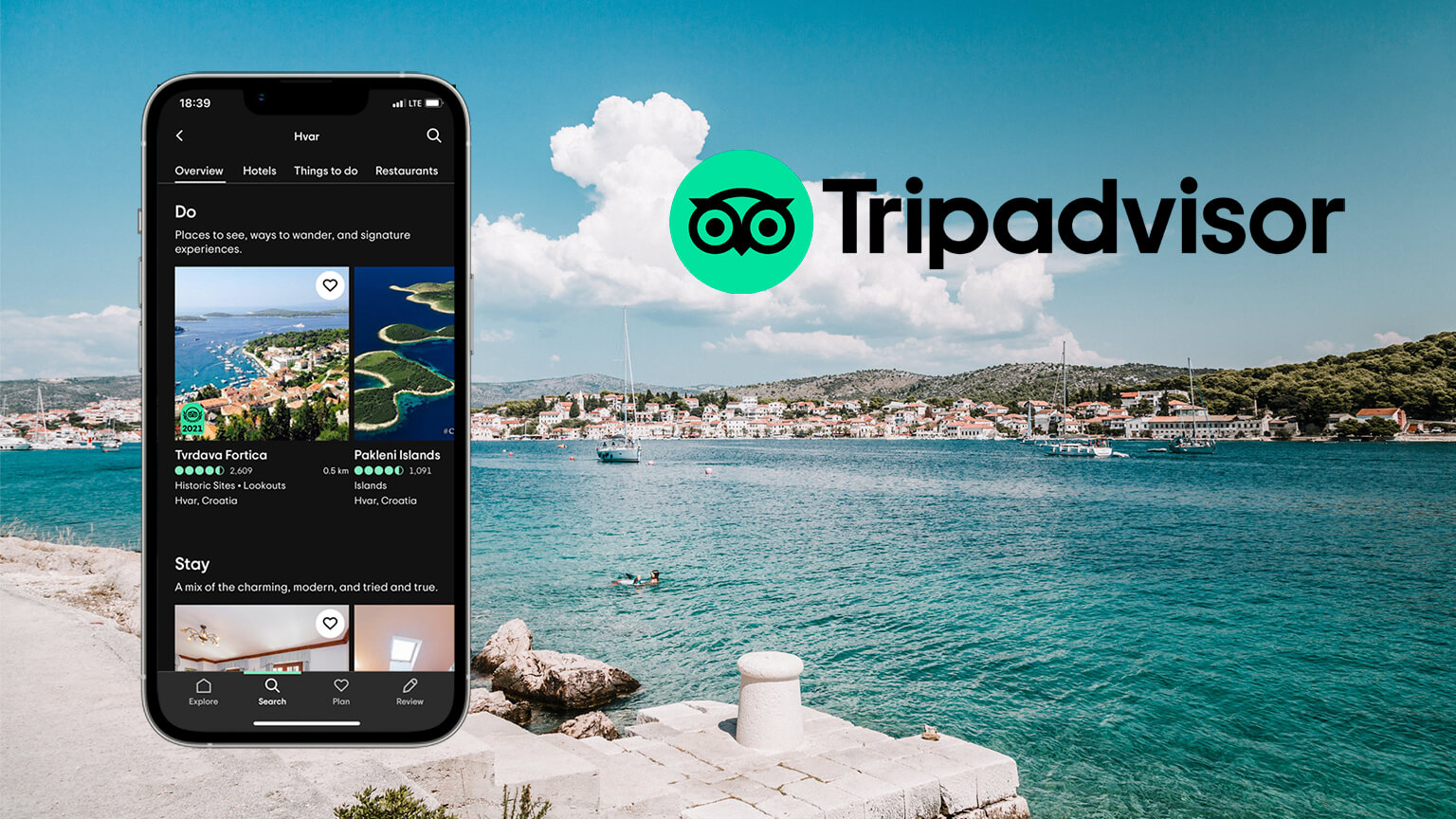
There are all types of tourists, and among them, there are those who do not usually arrive with pre-made itineraries, since for them spontaneity and improvisation add some emotion and a feeling of adventure to their vacations. Therefore, Tripadvisor is a great tool to get inspired and make a list of places to see and things to do in your destination in Croatia.
Available at Apple App Store and Google Play.
Uber
It may not have the best public transport in Europe, but Croatia is a country where you can get around without any problems. If time is not an issue for you and you enjoy urban and rural landscapes while onboard a bus or tram, then there is no reason to despair.
However, it is true that from time to time you will have to rush to the airport, the train station, the bus station, or the ferry port or you will lose your trip. Similarly, you never know when you may need to go to a hospital (when it's not an emergency) or maybe you've booked a tour where you have to meet the agency at a certain place and time. In these and many other cases, the virtue of patience is probably not enough and nerves do not allow you to wait for a bus or tram, which sometimes you do not know when they may arrive.
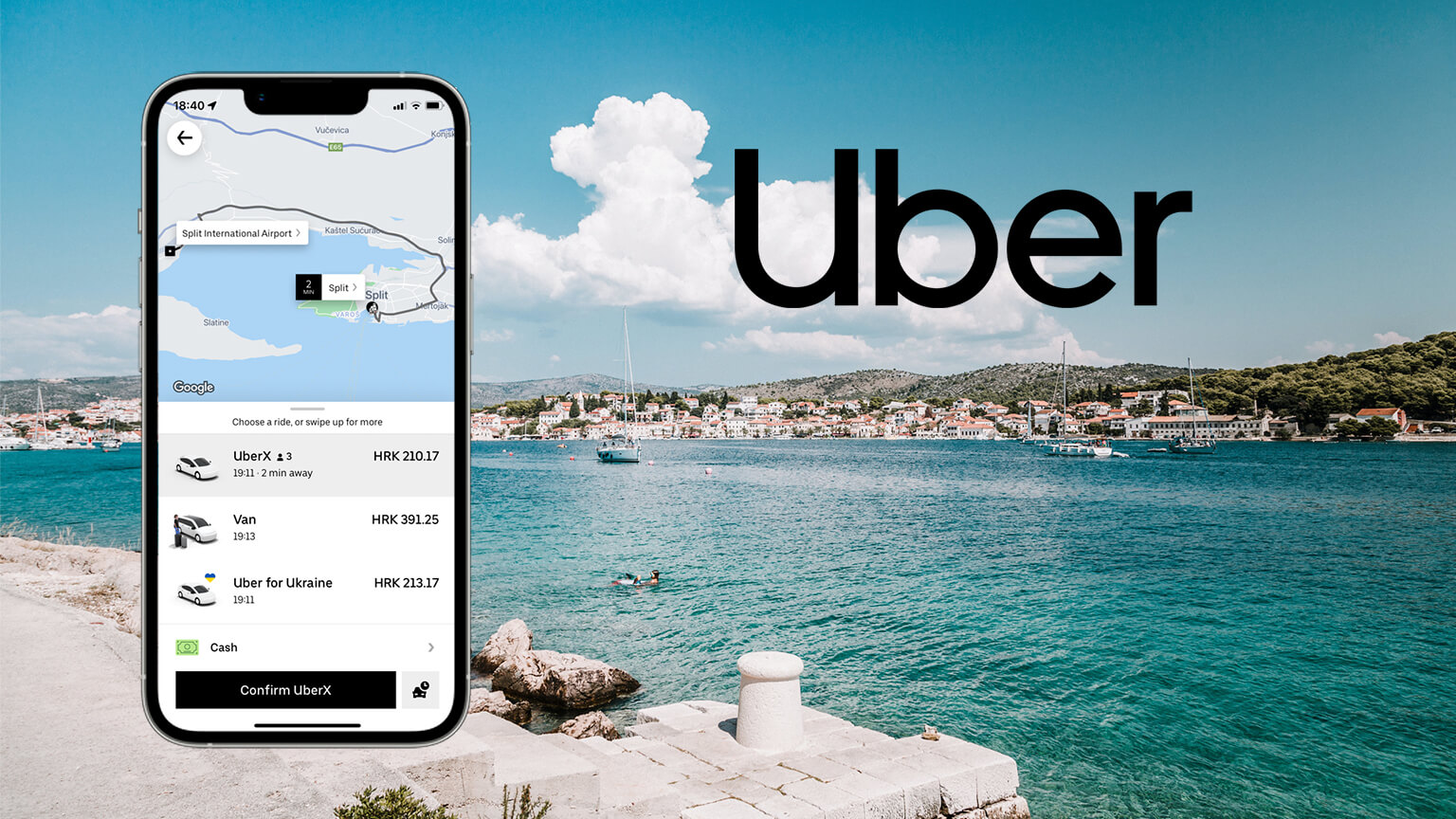
In that sense, it might be a bit obvious that having a taxi app installed is always a good idea. Yes, there are taxis that can take you from the airport to the city and vice versa but don't trust their rates. It is better to grab the WiFi and book the taxi from an app. While many in Croatia will recommend apps like Cammeo or Bolt, I have personally found Uber to be quite reliable and effective, with reasonable and fair rates.
Available at Apple App Store and Google Play.
Today's smartphones contain enough storage to install dozens of apps, so you shouldn't feel limited to just these ten. The idea is to travel calmly and happily, so the more apps you find that can help you organize your vacation, the better! Find apps that help you learn about private boat rentals, weather apps, airline apps, apps with biking or hiking trails, and more. Everything helps!
For more on travel in Croatia, follow TCN's dedicated page.


